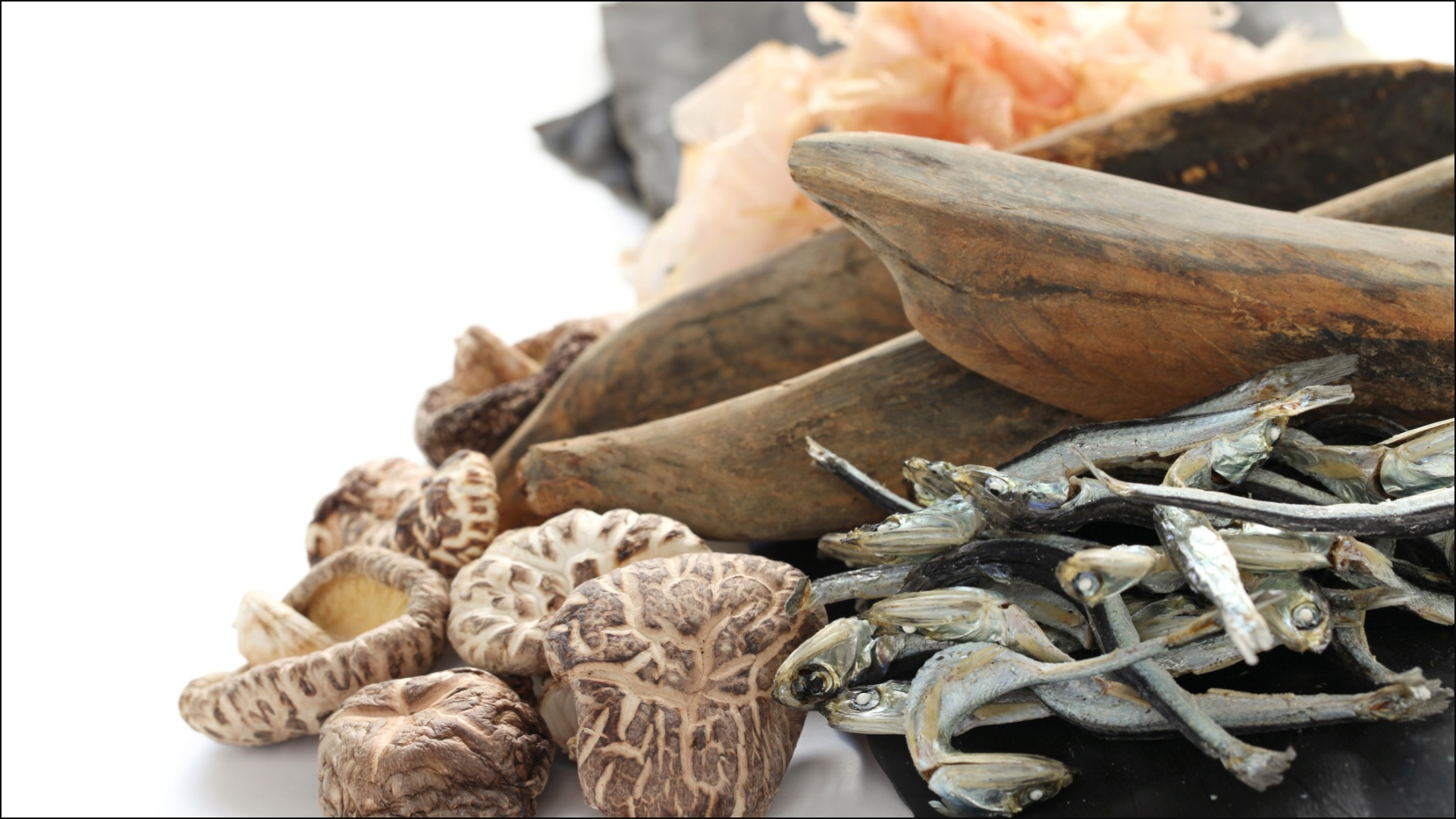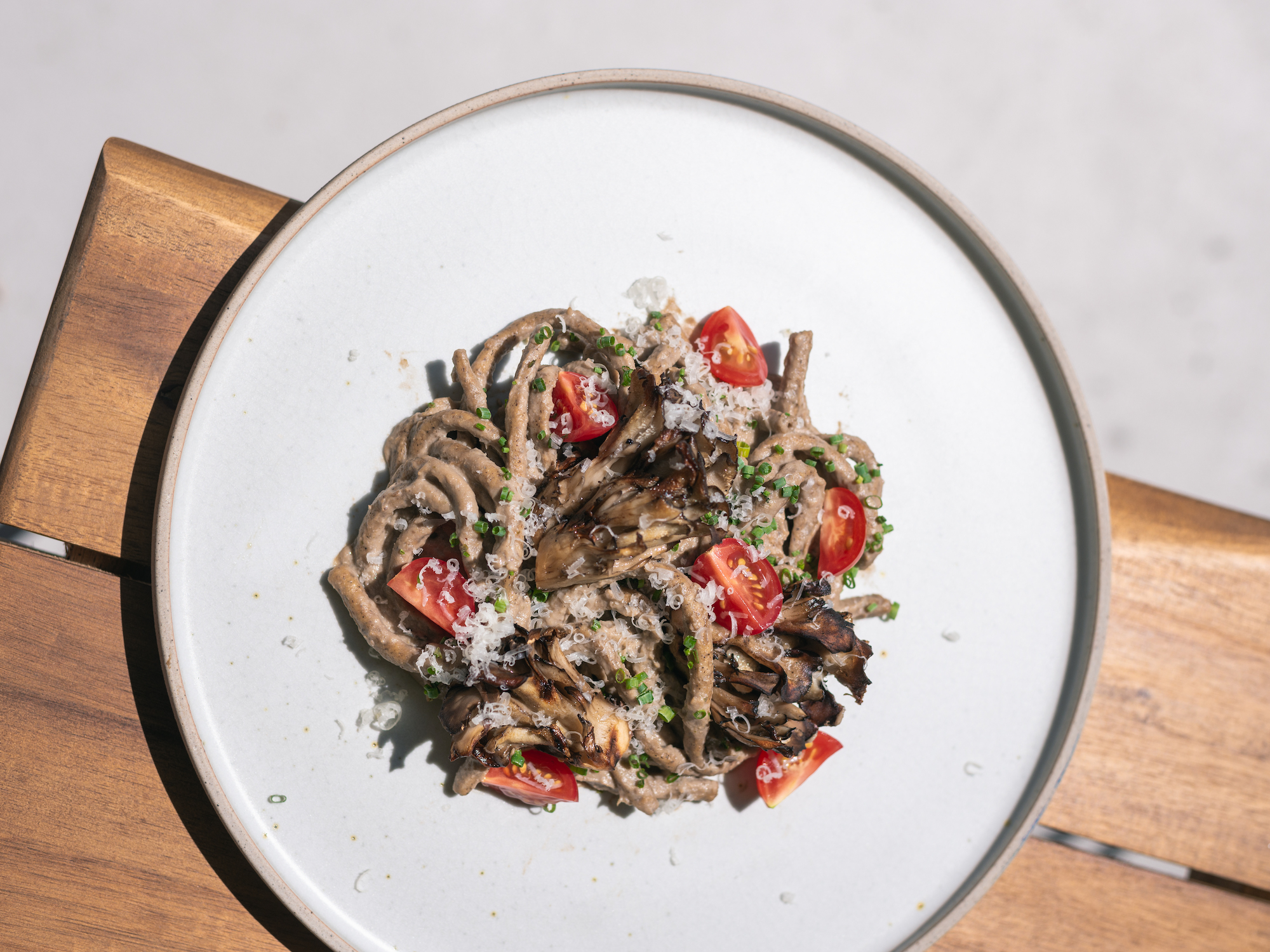A Chef Uncovers The Secrets Of Umami
Umami is a term we see everywhere but may not completely understand. I know I didn't—even as a chef, my cursory knowledge of this magical "fifth taste," as it's often described, was primarily based on specific materials that carried umami. I knew from kitchen repetition that adding a few splashes of fish sauce would deepen the flavor of a bubbling pasta sauce; that a dusting of dried porcini could make a green goddess dressing special; and that a generous helping of smoked crayfish improved a hefty braise. But what exactly happens to the food, and why does umami improve it? Why do our bodies and minds seem to physiologically crave umami? Perhaps unsurprisingly, if you dig deep enough you'll find this hard-wired preference goes back to our hunter-gatherer days when we had to search for necessary protein sources to keep us alive.
At a chemical level, what we describe as protein—both animal-based, like chicken, or vegetable-based, like soy—is built from amino acids, or organic compounds made of carbon, hydrogen, nitrogen, oxygen, or sulfur that are necessary for life. This matters because the taste of these amino acids are what we associate with the flavor of "umami"—Japanese for "delicious"—so much so that over the course of evolution, we have developed separate taste receptors on our tongue to specifically detect it. In fact, this instinct toward survival starts immediately at birth: One of our first sources of food, human breast milk, is far higher in the amino acid glutamate than other mammalian milks such as cow or goat.
Scientists theorize these umami-seeking receptors evolved to help us determine which foods are most rich in protein—particularly in free amino acids. Foods with free amino acids contain a high density of protein compounds that can break down quickly and release (or "free") their amino acids so our bodies can use them immediately. This freeing of amino acids occurs most rapidly through some sort of heat transfer in the cooking process, like roasting a chicken or grilling fresh oysters, but it can also develop slowly through fermentation and aging. This doesn't just happen in animal proteins like beef or pork; there are also high levels of amino acids in seaweed, soy sauce, and aged cheese.
Take sushi as an example. Sushi chefs will explain the true difference between a sushi master and an apprentice is their ability to consistently tease umami from all types of fish through careful aging. This also constitutes the biggest difference between sushi and sashimi: "For a fish's umami to come out, it needs time to age," says sushi master Tatsuya Sekiguchi of Omakase Room by Chef Tastu in New York City. Fresh fish served as sashimi, he says, is "all about texture," while fish meant for sushi will be placed in aging boxes and carefully held for days, even weeks, for the amino acid glutamate of its flesh to break down into its freed form, and transform the flavor of the fish into something subtly more pronounced, sharper and cleaner than its fresh-from-the-ocean form.
Another experience we commonly have with umami is biting into a really excellent sourdough loaf. Have you ever walked into a legacy bakery and seen a plaque about its decades-old levain as the foundation of those delicious goods behind the counter? That fermented mixture of flour and water, yeast and lactic acid bacteria contributes a special hard-to-place flavor in the final product. Yeasts excrete various amino acids throughout the fermentation process while the lactic acid bacteria helps maximize amino acid output. Over time, wild yeast and bacteria in the air increase the depth and taste of the levain, which is why bakers emphasize its age.
The quest for umami isn't just limited to food either. Sake, which is derived from steamed rice fermented with the mold koji, develops high levels of inosinic acid and some glutamate via its fermentation process—so much so that "umami" is a common term when describing its flavor. (Compare that to a bottle of wine or Champagne: While they also develop glutamate, the final levels per bottle are significantly lower than what's found in most sakes.)
While the word umami technically refers to the taste of glutamate, we typically use the word for all of its friends too. The layering of different types of amino acids and nucleotides are what make certain dishes really stand out. Chefs have discovered that mixing glutamate with inosinic acid (mostly found in meat and fish) and guanylate (most common in mushrooms) can be very rewarding, which is why you'll often find velvety bowls of tonkotsu ramen made from a combination of pork and chicken, or decadent stroganoff built from beef, mushrooms and sour cream (where lactic acid is added to cream!).
Umami done right, says Chef Richard Kashida of Jin Ramen and Dashi NYC, is like a "completed puzzle that gives you the full picture of the flavor of the ingredients when it hits all the senses." For those at home, this can be achieved both through a fun mix-and-match exercise across umami-rich categories (e.g. poultry, pork, red meats and game, fish, shellfish, seaweed, mushrooms, dairy, nuts, yeast, tea, and specific vegetables like tomato) or by home fermentation (the simplest being through yeast or lactic acid bacteria). While it's not necessary to research which amino acids or nucleotides are available in each item—unless you want to!—it is helpful to understand the broad strokes of amino acids represented in each, and develop the flexibility to try out new variations. For example, the following recipe, a mushroom sauce based in average-Joe creminis, takes on a new dimension when you extract the umami flavor from both the chicken stock and fish sauce. Toying with sunflower seeds adds a creamy viscosity and a different type of umami than what's found in milk or cream.
Diving into the world of umami is a dizzying prospect, but also incredibly fruitful. As Chef Suzanne Cupps of 232 Bleecker says, "Umami was what makes people want to finish their whole plate and come back for more."
Pasta With Creamy Mushroom Sauce
Serves 4
Yield: 2 cups sauce
Ingredients
- 2 (12-oz.) packages of bucatini, or pasta of choice
- 2 Tbsp. neutral oil
- 1/2 tsp. hing powder
- 1 medium yellow onion, sliced
- 12 cloves garlic, sliced
- 1 lb. cremini mushrooms, sliced
- 2 tsp. chopped fresh oregano leaves
- 1/4 cup dry white wine
- 1 1/2 Tbsp. soy sauce
- 2 tsp. fish sauce
- 2 tsp. maple syrup
- 1/4 tsp. ground white pepper
- 1/3 cup roasted unsalted sunflower seeds
- 2 1/2 cups unsalted chicken stock
- 1 lemon, juiced
- Kosher salt, to taste
- White sugar, to taste
- Maitake mushrooms, sautéed or grilled
- Cherry tomatoes
- Parsley, chopped
- Chives, chopped
- Pecorino, grated
- Lemon, in wedges
Toppings (Optional)
Heat oil in large, shallow pan over medium heat until slick and shiny.
Add hing powder and let sizzle 30 seconds.
Add onions and garlic with a dash of salt.
Lower heat to medium-low and sauté until onion is lightly caramelized, roughly 10 minutes.
Add cremini mushrooms and oregano. Increase heat to medium and sauté 3-5 minutes, or until mushrooms have reduced in size considerably.
Deglaze with white wine, and reduce until all liquid has been absorbed.
Add soy sauce, maple syrup, white pepper, and sunflower seeds and sauté another 1-2 minutes until fragrant and the liquid from the soy sauce has been absorbed.
Add chicken stock and bring mixture to a light simmer.
Let mixture reduce 5 minutes.
Remove sauce from heat and pour into blender. Puree until very smooth, adding additional chicken stock if necessary.
Add lemon juice, then season with salt and sugar to taste. Serve over pasta with toppings.

